How to Buy Your First Car in Canada: A Car Buying Checklist for Newcomers
Buying your first car is an exciting milestone, especially for newcomers to Canada. However, the process might be overwhelming, filled with choices and important considerations.
Whether you’re navigating car models, evaluating your financing options, or understanding the insurance requirements, having a comprehensive guide can make a world of difference. This article will provide a car buying checklist for first-time car buyers to help you successfully buy your first car in Canada.
Read More:
Selling Your Used Car: Maximizing Your Car’s Value in Toronto’s Competitive Market
Expert Tips to Increase Your Used Car Trade-In Value
Selling Your Used Car in Ontario: How To Do It Right
How to Buy Your First Car in Canada: A Car Buying Checklist for Newcomers
How to Buy Your First Car in Canada
When you’re ready to buy your first car in Canada, having a structured approach is essential. This checklist helps keep you organized and focused as you go through the car-buying process, allowing you to make informed decisions every step of the way. Here’s a comprehensive checklist to guide you through the process:
Ensure You Have a Valid Driver’s License
As a newcomer to Canada, one of the first and most important steps to buy your first car in Canada is ensuring you have a valid driver’s license. Depending on the province or territory you reside in, the requirements may vary. In some cases, you may be able to use your international driving permit, while in others, you’ll need to obtain a Canadian license. To learn more about the specific requirements for your region, visit the Government of Canada’s website. This resource will provide you with all the necessary information to ensure you’re legally able to operate a vehicle in Canada.

Research Vehicles Online
Before you start visiting car dealerships, take the time to research different makes and models online. Explore the websites of dealerships and other car-buying resources to compare features, pricing, and consumer reviews. This will help you narrow down your top choices and enter the negotiation process with a clear understanding of the vehicle you’re interested in. Also, consider getting a vehicle history report. These reports can reveal essential information about a used car’s accident history, safety recalls, and other important factors to help you make an informed decision.
Create a Shortlist
Once you have a clear idea of your budget and vehicle preferences, create a shortlist of cars to consider. Consider whether you need a compact car for city driving or a larger SUV for family excursions. Think about your lifestyle and how you intend to use the car. Decide if you want a new vehicle, which often comes with warranties and the most recent features, or a used car, which is less expensive but may require more maintenance.
Determine Your Budget
Before diving into the world of car buying, assess your financial situation. This includes:
Total Budget: Decide on a total budget for your car purchase, which should include not only the price of the vehicle but also taxes, registration, and potential repairs.
Monthly Payments: If you plan to finance your vehicle, calculate how much you can afford to pay monthly. Use a car loan calculator to estimate your payments based on different loan amounts and terms.
Additional Costs: Factor in costs for insurance, maintenance, fuel, and registration. These ongoing expenses can significantly impact your budget.
Decide Between a Car Loan or a Lease
In Canada, the two most common financing options for purchasing a vehicle are taking out a loan or signing a lease. Each option has its advantages, so it’s important to weigh the pros and cons to determine which one aligns best with your financial goals and needs.
Car Loans
With a car loan, you can borrow up to 100% of the vehicle’s purchase price. Once the loan is paid off, the car is yours to own. This can be a good option if you plan to keep the car for several years and want the flexibility of owning it outright.
Leases
Leasing a vehicle may be a better choice if you prefer to get a new car every two to three years. With a lease, you make monthly payments for the duration of the agreement, and at the end of the lease, you return the car to the dealership.
Regardless of which option you choose, be sure to carefully consider your budget and factor in the ongoing costs of ownership, such as insurance, fuel, and maintenance. Consider getting pre-approved for a loan to simplify your buying process. This can give you a clearer idea of your budget and strengthen your negotiating position.
Get a Car Insurance Quote
In Canada, car insurance is mandatory, and the cost can vary significantly depending on factors like your age, driving record, location, and the type of coverage you choose. It’s a good idea to shop around and get quotes from multiple providers to ensure you’re getting the best rate.
Prepare for the Test Drive
Once you’ve narrowed down your options, it’s time to test drive the vehicles on your shortlist:
Schedule Appointments: Contact dealerships or private sellers to schedule test drives.
Inspect the vehicle: Pay attention to how the car handles, its comfort level, and any unusual noises.
Take Your Time: Don’t rush through the test drives; take your time to evaluate each car thoroughly.
When selecting your first car, consider test-driving a few models to see which fits your driving style and comfort level best. Prioritize safety and reliability to ensure your driving experience is as smooth as possible.
Top Rated Cars for New Drivers
When considering the best cars for new drivers in Canada, safety and reliability should be your top priorities. New drivers benefit from vehicles that are easy to handle and equipped with advanced safety features. Here’s a look at some of the best options:
Toyota Corolla
Known for its reliability and excellent fuel efficiency, the Corolla also comes equipped with advanced safety features, making it a great choice for new drivers. The low cost of Corollas and their impressive reliability make them an excellent choice as a good first car for those on a budget without the need for acres of interior space. It also has a strong resale value, which can benefit you in the long run.
Honda Civic
The Civic is another reliable option, offering a comfortable ride, good fuel economy, and a reputation for longevity. It has a variety of safety features, including adaptive cruise control and collision mitigation brakes. It may also come as something of a surprise to learn that late-model Civics are among the cheapest cars to insure for new drivers.
Subaru Impreza
With standard all-wheel drive, the Impreza is perfect for Canadian winters. Among the best all-around a new driver can get, the Subaru Impreza balances affordability, safety, extreme practicality, and the cool factor that comes with go-anywhere capability. It also boasts impressive safety ratings and a spacious interior, making it a practical choice for young families or those who need extra space.
Mazda3
This compact car is known for its sporty handling and stylish design, while also providing safety features and good fuel efficiency. Its interior quality is often praised, giving you a more premium feel without the premium price. Not as cheap as other good first cars on this list, but the Mazda 3 offers a combination of space, fun, looks, and safety that few can match.
Hyundai Elantra
The Elantra offers a generous warranty, good safety ratings, and features that are often found in more expensive vehicles. It’s a well-rounded option for new drivers, particularly those looking for a value-oriented choice.
Car Insurance and Registration in Canada
After you’ve selected your vehicle and secured finance, the next step is to learn about the car insurance and registration process in Canada. Both are essential for legally operating your vehicle on public roads.
Car Insurance
In Canada, car insurance is mandatory. Each province has its own minimum requirements, so it’s essential to familiarize yourself with the regulations in your area. Generally, you’ll need liability coverage, which protects you in case of accidents causing injury or property damage.
Types of Coverage
Liability Insurance: Covers damages to other people’s property and medical expenses in the event of an accident where you are at fault. This is typically the minimum required by law.
Collision Insurance: Covers damages to your vehicle from collisions, regardless of fault. This is particularly important if your vehicle is new or has significant value.
Comprehensive Insurance: Protects against non-collision incidents like theft, vandalism, and natural disasters. This is recommended for vehicles that are new or high in value.
Optional Coverage: Depending on your needs, consider adding roadside assistance and rental car reimbursement to your policy. These might provide you peace of mind in an emergency.
Compare quotes from several insurance companies to find the best pricing. Be sure to inquire about discounts for safe driving, bundling policies, or being a member of specific organizations. Many providers offer discounts for students or new drivers who complete a driver’s education course.
Vehicle Registration
After acquiring your car, you must register it with your province’s motor vehicle department. Understanding the insurance and registration process is vital for driving legally and safely in Canada. This process usually involves confirming ownership, insurance, and identity. To avoid delays, ensure that you have the relevant paperwork prepared.
Fees: Be prepared to pay registration fees, which vary by province. Some provinces also require a vehicle inspection or emissions test before registration. Check with your local motor vehicle department for specifics.
License Plates: Once registered, you’ll receive license plates for your vehicle. Ensure that your plates are displayed correctly and are not expired. Some provinces may allow you to personalize your plates for an additional fee.
Renewal: Vehicle registration typically needs to be renewed annually. Keep track of your renewal date and any associated fees. Setting reminders can help you avoid lapsing your registration, which can result in fines.
Buying your first car in Canada in Canada may be a rewarding experience if you approach it with the necessary knowledge and preparation. Following this detailed car buying checklist will allow you to confidently manage the challenges of car ownership. From researching the options and understanding financing to obtaining insurance and registration, every step is critical to a smooth transition into car ownership. The right car is out there; just arm yourself with the knowledge you need to make an informed decision and enjoy the adventure!
For more information on how to Buy Your First Car in Canada, visit YST Auto Sales.
For a hassle-free experience, consider YST Auto Sales, your trusted used car dealer. Selling or trading in a used car in Ontario with YST Auto Sales is quick and easy. Simply visit our Sell Your Car page and enter your car’s details to get an instant cash offer within minutes.
Unlike selling privately through online marketplaces, YST Auto Sales eliminates listing fees and time-wasting negotiations and skips the hassle of meeting buyers. You will receive a transparent cash offer upfront. YST Auto Sales offers pick-up right at your door or a convenient drop-off location.
If you’re looking to upgrade, use your old car as a trade-in for a new one from our extensive selection. YST Auto Sales will even handle the simultaneous pick-up and drop-off for both vehicles. This also saves your valuable time and saves more on your new car—a win-win!

